|
The Turn Of The Century Electrotherapy
Museum http://www.electrotherapymuseum.com  Protocakes: 9" Pancake Coils for Studying Stratia, Electrical Discharges, and Phantom Streamers Testing, Phase I Photos: 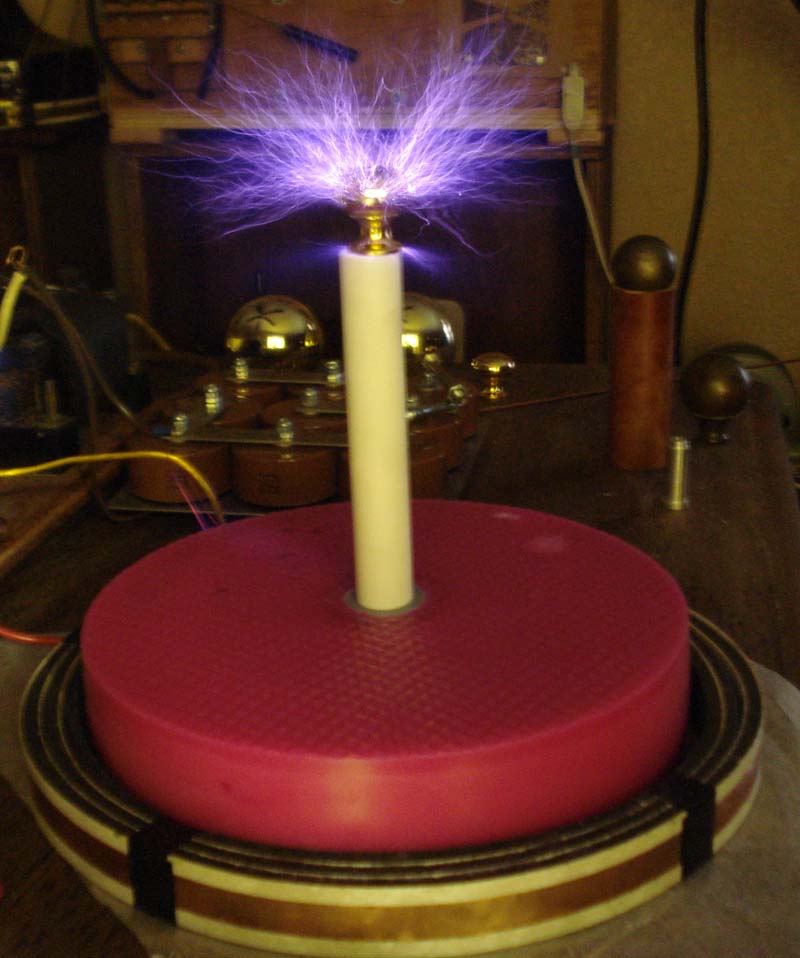 The coils are initially tested using a 3500V 120mA Diathermy Transformer. .01 mfd is used, and a single 1/4" diameter tungsten spark gap. 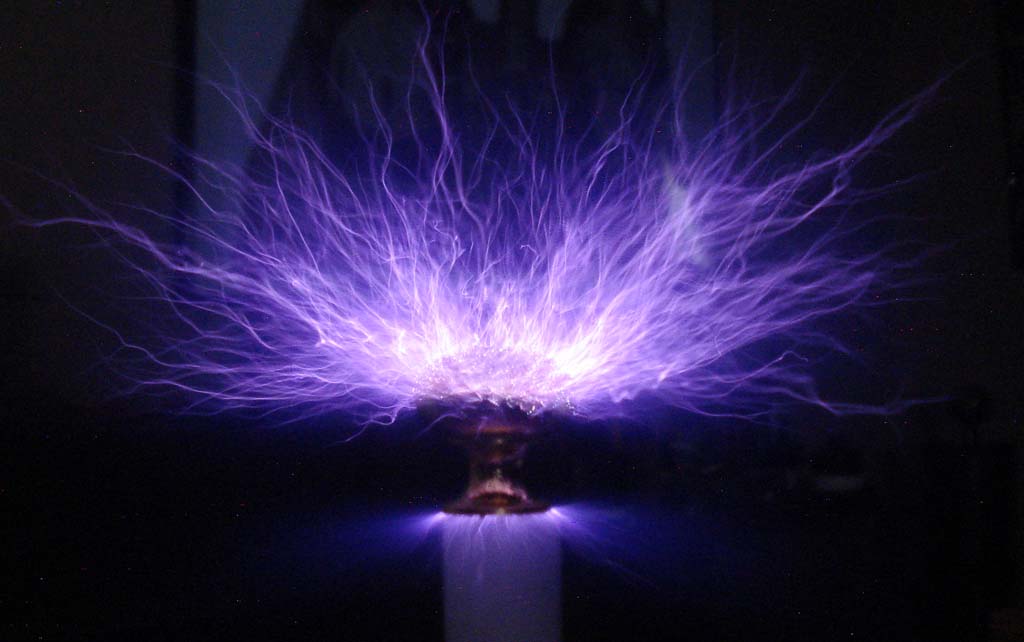 They produce a beautiful brush discharge.  And crashing sparks 3-5" depending on the gap setting... but for studying electrical phenomena, we want less current. 30mA will work, but we're going to use even LESS!  For the remaining tests of statia, effluves, corona, etc. the larger Diathermy transformer is replaced with a small neon sign transformer, 3500V at only 8mA. This 30 watt transformer can produce a wide range of effects with these coils, despite the small amount of current consumed.  Actown Transformer epoxied inside of the ceramic housing above. This was originally part of a small neon light fixture... and is perhaps the smallest core and coil neon transformer made today. The physical dimensions of the transformer are only several inches square, perhaps 1/3 the size of the photo!  Sparks, with brass discharger removed. 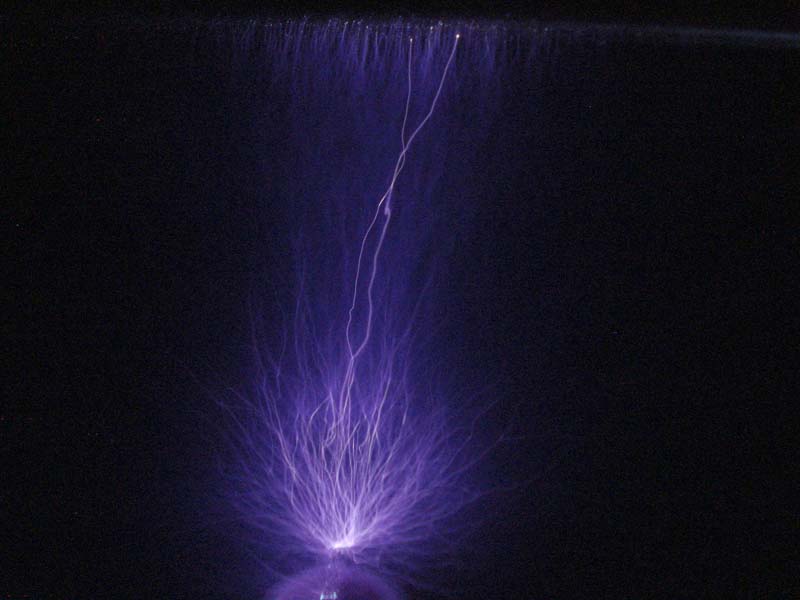 Effluves with a metal rod just out of reach... 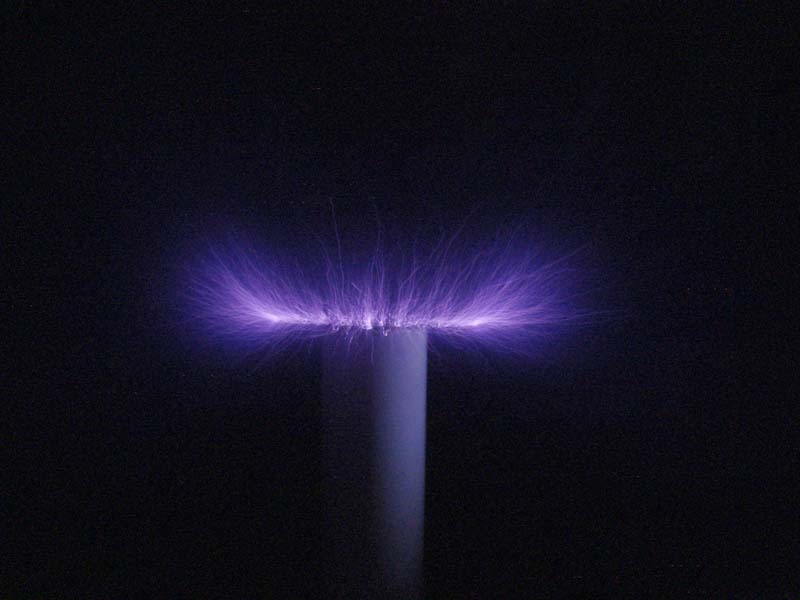 The ball is replaced with a small disc terminal. 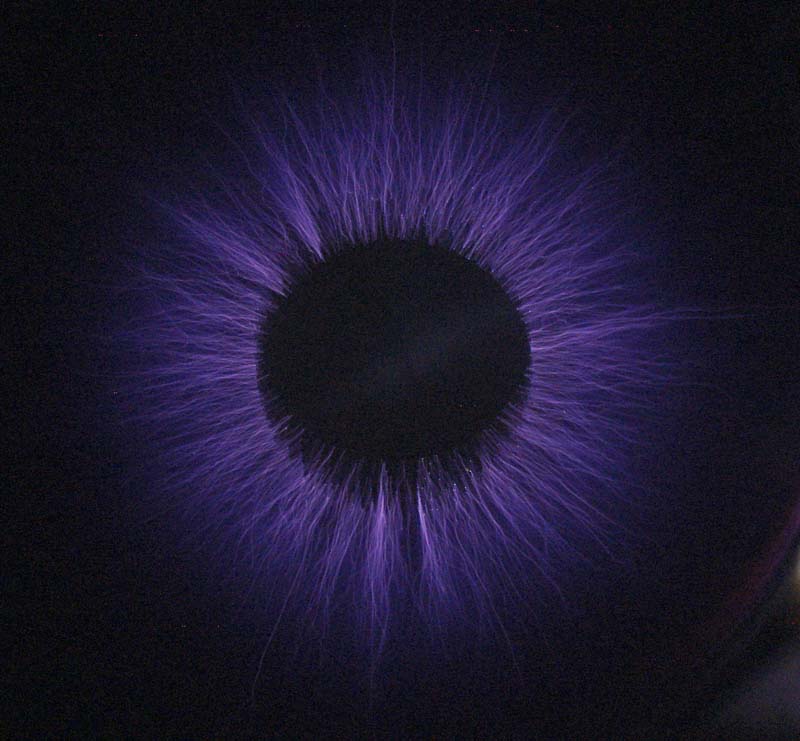 The disc terminal will produce a small brush discharge with 6" Phantom Streams bowing off of the edge of the discs. Only a small portion of the misty white streams can be seen in the photo. This is one of the most beautiful effects produced with a Tesla Coil, and has some interesting properties for investigation.  A small neon bulb will light a distance from the coil... 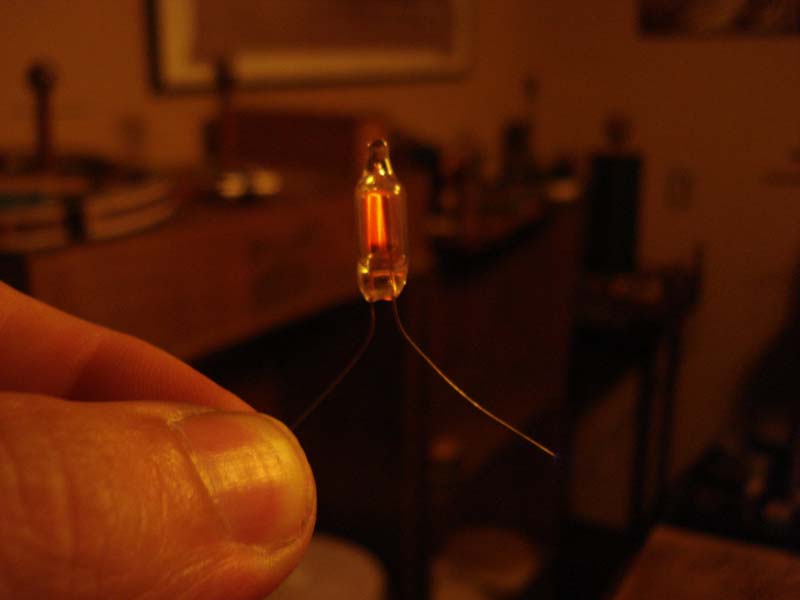 When one terminal of the bulb is held in the hand, and the other is approaching the Phantom Streams the neon electrode grounded to the operator will light brightly, while the other terminal remains dim. This shows that the Phantom Streams are positively charged. 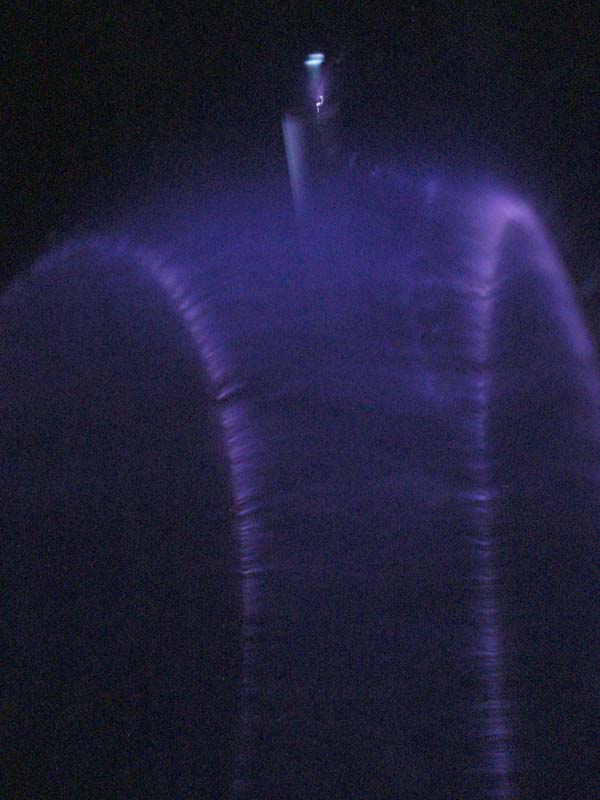 By attaching a 6" disk to the terminal via a small wire, and placing a grounded 6" disk several inches away parallel to the first, the air between the disks will be ionized producing a vivid plane of light.  A length of wire attached to the top of the coil can also produce a variety of interesting effects... 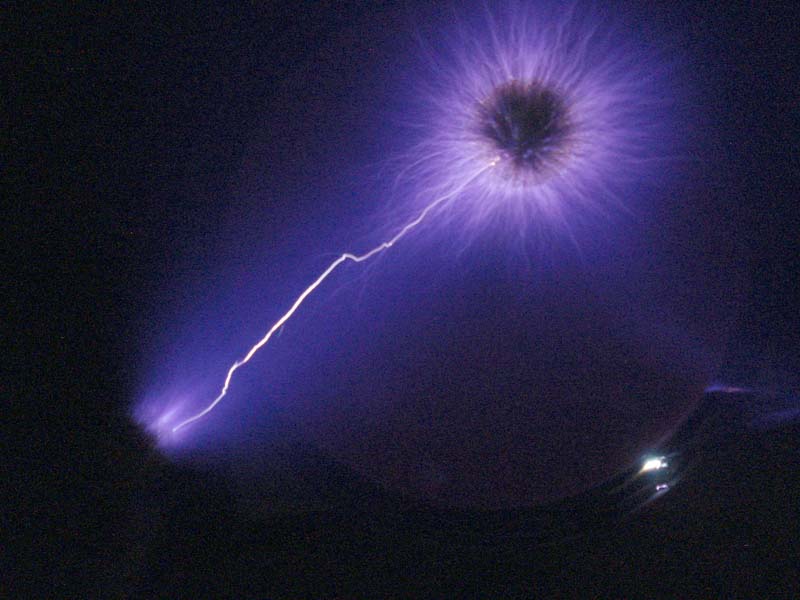 Metal rods held just at the maximum spark length will produce curious thin discharges surrounded by effluves. 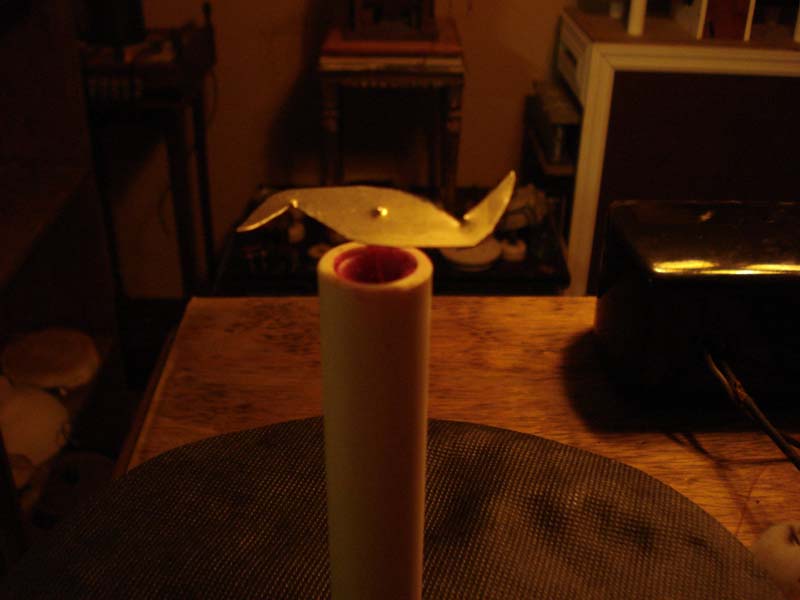 A piece of sheet metal cut into a propeller shape will create a fast spinning ion motor... 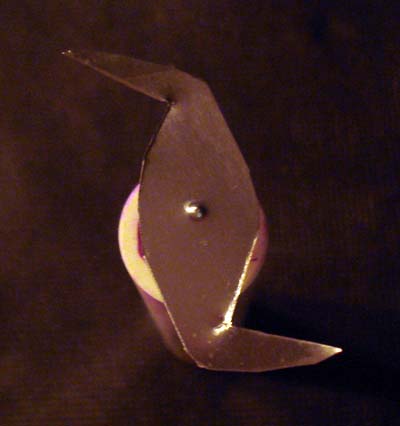 Even if crudely made, beautiful effects can be seen: 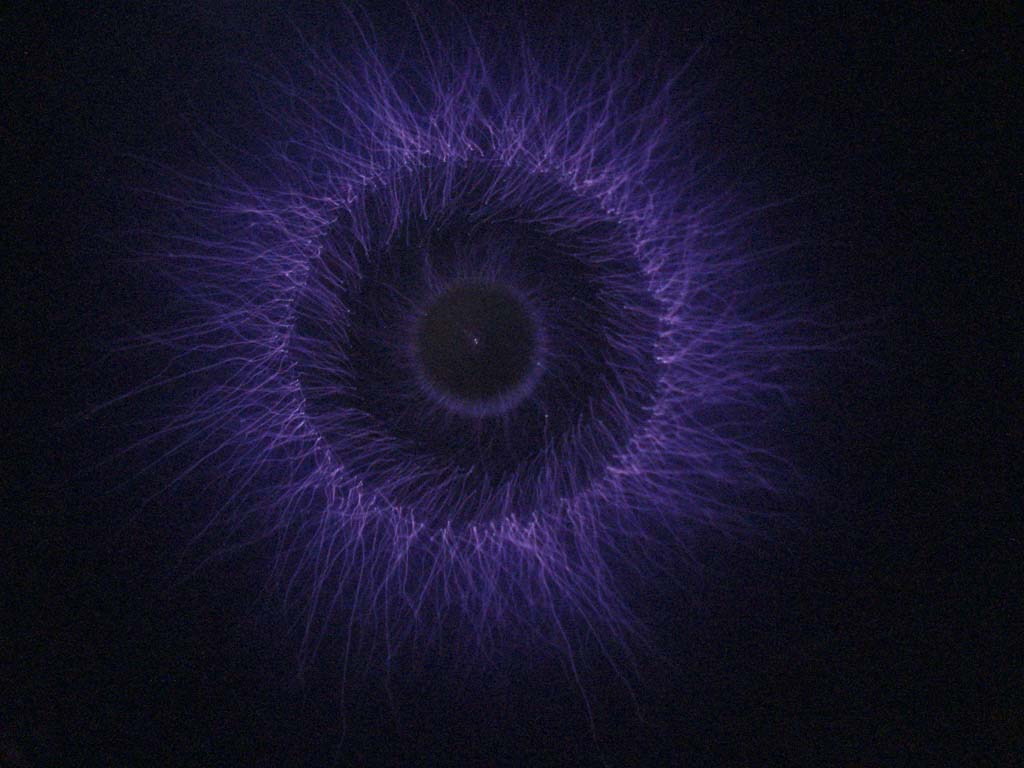 The appearance from above is an array of rotating sparks. 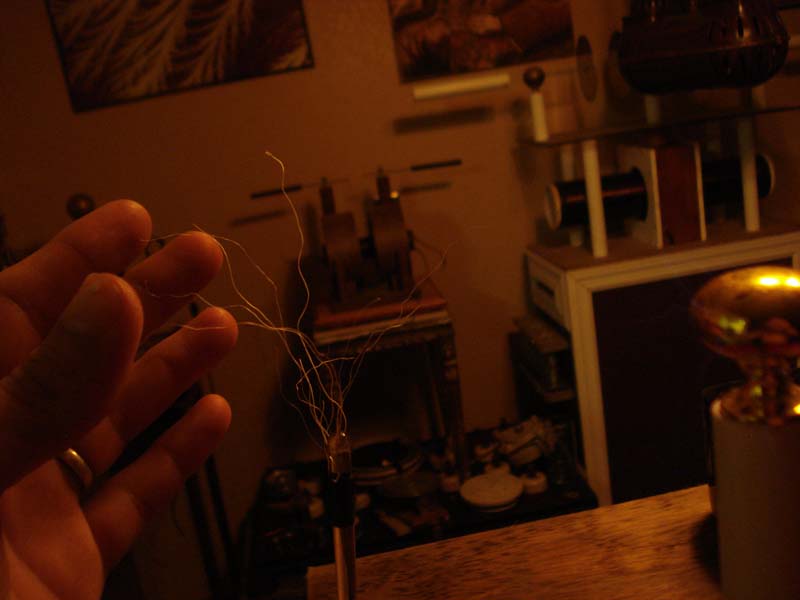 Pieces of twine taped to a glass rod will attract and repel when in the vicinity of the Phantom Streams... 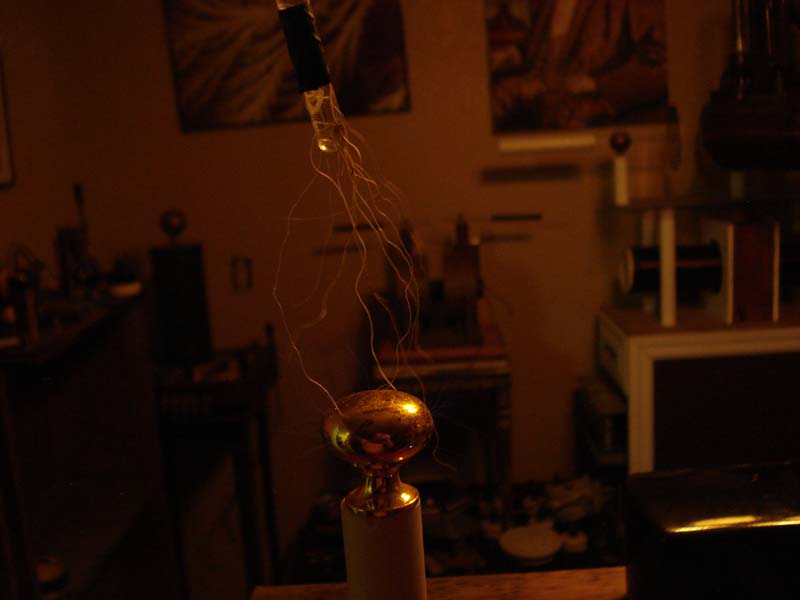 The same twine being attracted to the discharge terminal...  Perhaps the most intriguing thing about these coils are the ability of them to operate on extremely low amounts of power. Most Tesla Coil builders know that a neon sign transformer will generally operate on a lower voltage than the nameplate rating states, but generally the coil is not saturated to the same degree and less current is present (as well as lower voltage). With an 8mA transformer, how low can the current and voltage actually get? This coil will continue to operate at 80V, 60V, 40V, 30V,... even down to only 10V AC! Assuming for arguments sake we are getting a full 8mA from the secondary winding at only 10V input voltage. Let's measure the voltage across the cap: 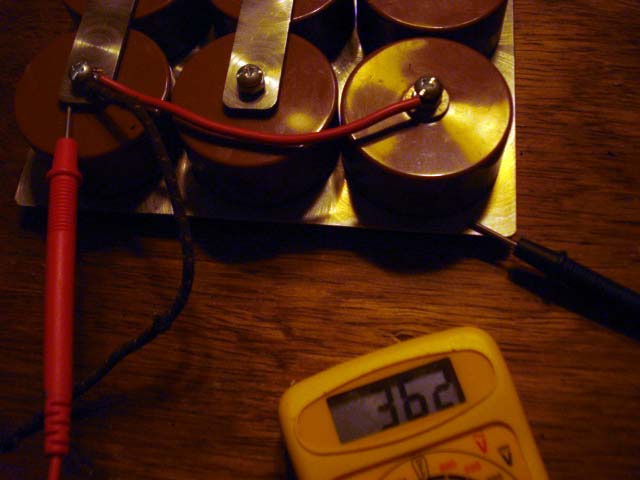 362 volts. 362V x .008mA = approx. 2.9 watts of power. At this insanely low power level, the coil will still produce oscillatory sparks from the bare wire from 3/16 - 1/4" long. Running the variac from 50 volts upward will still produce sparks and phenomena 2 - 3" long. This equates to 10 - 20 watts of power. At below 40V, the coil still functions but sparks are generally around an inch long or less. At 20V input, 500 - 600V across the capacitor, approx. 5 watts of power, 1/2" sparks sufficient for corona leak testing/etc. are generated. It should be noted that at these lower voltages, the spark gap is nearly touching...yet it is sustained without any problems. To run the transformer at less than 10 volts makes it difficult (but not impossible) to sustain the spark gap without having a micrometer adjustment. Click here for a 4 1/2 minute YOUTUBE video! |